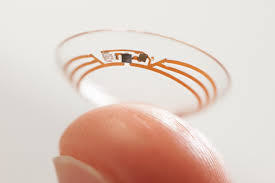
Breaking News
SEMI-NEWS/SEMI-SATIRE: December 7, 2025 Edition
 Harbor Freight Coverpro 12x20 made into a Metal Building part 2
Harbor Freight Coverpro 12x20 made into a Metal Building part 2
 Brian Cole BUSTED, Halle Berry NUKES Newsom + Candace REJECTS TPUSA Challenge...
Brian Cole BUSTED, Halle Berry NUKES Newsom + Candace REJECTS TPUSA Challenge...
 I spent my Thanksgiving in the emergency rom... Medical emergencies can pop up at any time.
I spent my Thanksgiving in the emergency rom... Medical emergencies can pop up at any time.
Top Tech News
 Build a Greenhouse HEATER that Lasts 10-15 DAYS!
Build a Greenhouse HEATER that Lasts 10-15 DAYS!
 Look at the genius idea he came up with using this tank that nobody wanted
Look at the genius idea he came up with using this tank that nobody wanted
 Latest Comet 3I Atlas Anomolies Like the Impossible 600,000 Mile Long Sunward Tail
Latest Comet 3I Atlas Anomolies Like the Impossible 600,000 Mile Long Sunward Tail
 Tesla Just Opened Its Biggest Supercharger Station Ever--And It's Powered By Solar And Batteries
Tesla Just Opened Its Biggest Supercharger Station Ever--And It's Powered By Solar And Batteries
 Your body already knows how to regrow limbs. We just haven't figured out how to turn it on yet.
Your body already knows how to regrow limbs. We just haven't figured out how to turn it on yet.
 We've wiretapped the gut-brain hotline to decode signals driving disease
We've wiretapped the gut-brain hotline to decode signals driving disease
 3D-printable concrete alternative hardens in three days, not four weeks
3D-printable concrete alternative hardens in three days, not four weeks
 Could satellite-beaming planes and airships make SpaceX's Starlink obsolete?
Could satellite-beaming planes and airships make SpaceX's Starlink obsolete?
Smart contacts: The future of the wearable you won't even see

Material science and our understanding of the human eye have come a long way since, while their purpose has remained largely the same. In the age of wearable computers, however, scientists in the laboratories of DARPA, Google, and universities around the world see contact lenses not just as tools to improve our vision, but as opportunities to augment the human experience. But how? And why?
As a soft, transparent disc of plastic and silicone that you wear on your eyeball, a contact lens may seem like a very bad place to put electronics. But if you look beneath the surface, the idea of a smart contact lens has real merit, and that begins with its potential to improve our well-being.
A picture of health
Over the past decade or so, scientists have made great advances with technologies that can provide different measures of our health by sampling our bodily fluid. Sweat is a great example of this. Researchers around the world are working on patches equipped with sensors and electronics that can be worn on the skin to analyze the makeup of our sweat, working out which chemicals are present and which ones are not.

 First totally synthetic human brain model has been realized
First totally synthetic human brain model has been realized Mach-23 potato gun to shoot satellites into space
Mach-23 potato gun to shoot satellites into space

